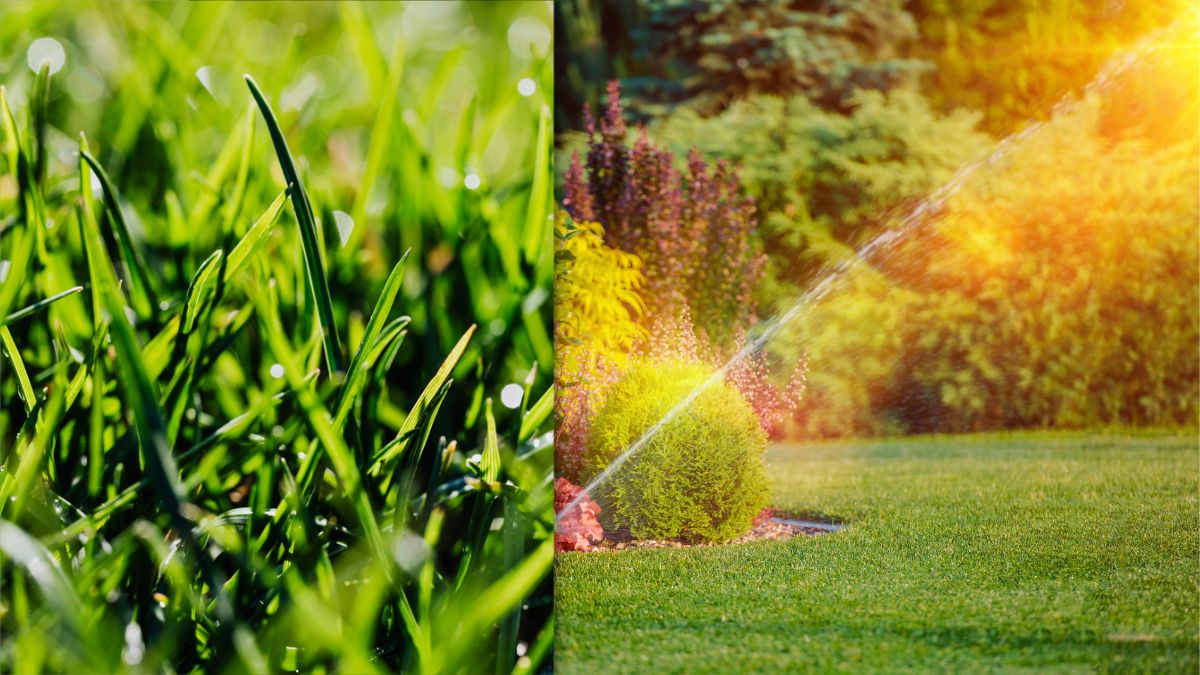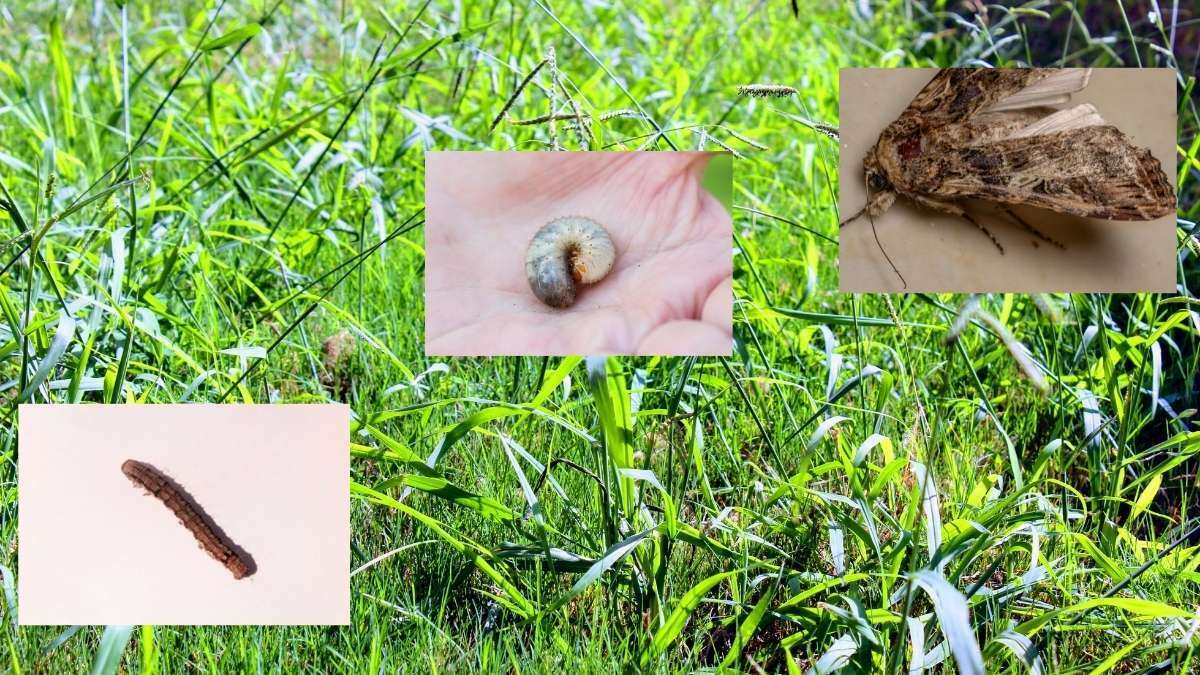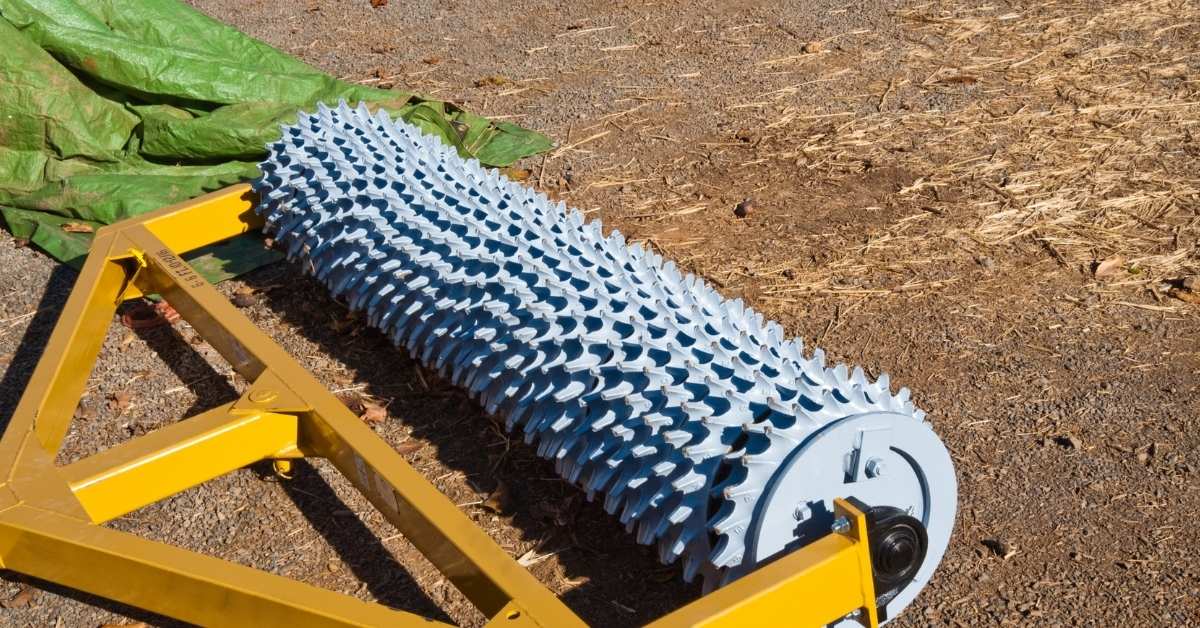The beginning of spring is the ideal time to offer your grass some more attention and care as the warmer weather approaches. Your lawn will come back to life as the weather gets warmer and the days become longer; if you give it the proper attention, it may develop a lush and green appearance.
To assist you in getting your lawn into tip-top form for the new season, we have compiled this guide, which will give you 17 valuable suggestions for spring green lawn maintenance. These pointers, which range from analyzing your soil to clearing away garbage, can assist you in developing the ideal lawn for your home.
It doesn’t matter if you’ve been taking care of lawns for years or if this is your first time gardening; if you follow these guidelines, you’ll have a lawn that is both attractive and healthy come spring. Let’s get down to business and discuss how to properly care for your lawn throughout the spring months so that it may flourish and look its best.
17 tips for Preparing your lawn for spring growth
Test your soil to determine if it needs any amendments before planting

Soil testing is a crucial part of every expert gardener‘s pre-planting preparations. By analyzing your soil’s pH and nutrient levels, you can better care for your plants and guarantee optimal growth. This article will explain why and how to do a soil test.
The pH of your soil indicates how acidic or alkaline it is. Most plants like somewhat acidic soil, with a pH between 6.0 and 7.0. Some plants, however, such as blueberries and azaleas, require a more acidic soil with a pH of 4.0 to 5.0. Certain nutrients may become less available to your plants if your soil is overly alkaline or acidic, making growth more difficult. By testing it, you can discover if your soil’s pH level needs to be altered and which amendments to apply.
Another critical aspect of soil testing is determining the nutrient content for spring lawn care. Different plants have different nutritional needs. For example, some plants might require high nitrogen levels, while others prefer higher phosphorus and potassium levels. By testing your soil pH levels, you can determine which nutrients are lacking and which amendments to use to bring your garden soil to the optimal level for the plants you want to grow.
So, how do you test your soil? The first step is to take some soil samples for analysis. You can do this by using a soil probe or a trowel to collect a small amount of soil from several spots in your garden. Be sure to collect soil from different depths, as the pH level and nutrient content can also vary depending on the depth. Once you have collected your soil samples, you can send them to a lab or use a home soil test kit.
Once you receive the results of your soil tests, you may decide which amendments to put to your soil. Lime is commonly used to raise the pH, sulfur is used to reduce the pH, and fertilizers are used to supply particular nutrients. It is critical to follow the advice included with your soil test results and to apply the appropriate amount of amendments. Over-modifying your soil might have the same adverse effects as not amending it at all.
Finally, assessing your soil is an essential step in preparing your garden for planting. You can guarantee that your plants have the right growing circumstances by assessing the pH level and nutrient content. You’ll be well on your way to a healthy and fruitful garden if you follow the advice provided with your soil test results and add the appropriate amendments.
Remove any debris from your lawn, such as leaves, twigs, and dead grass
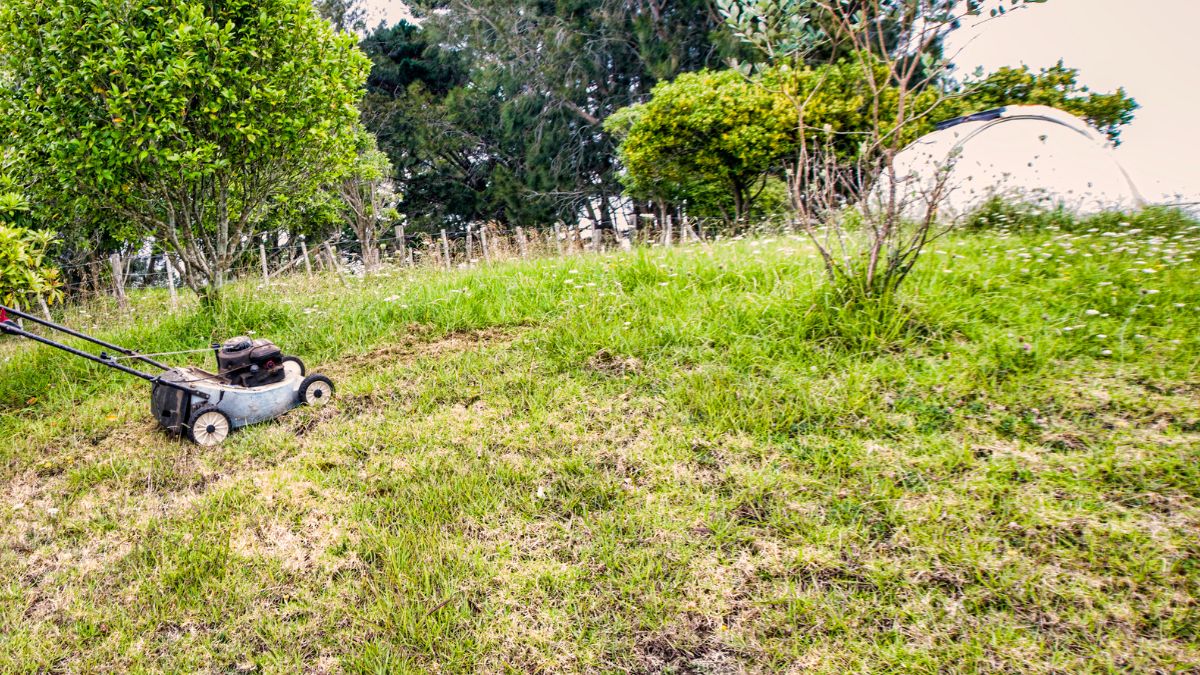
Debris removal is a vital step in preparing your grass for spring development. Debris, like leaves, twigs, and dead grass, can choke the grass, preventing it from getting enough sunshine, water, and nutrients. Furthermore, this waste can house pests and illnesses, causing further harm to your grass.
A leaf rake is an excellent tool for removing rubbish from your yard. A leaf rake is a huge rake with long, flexible tines that can effectively collect leaves, twigs, and other waste. Begin by raking in one direction, then return to the grass at a right angle to the first pass. This ensures that all debris is gone and the lawn is smooth.
If you have a lot of debris, you might also use a lawn mower with a bag attachment. You will be able to gather and dispose of the waste without having to rake it by hand.
Clearing any clogged gutters, downspouts, or drainage systems is another crucial step in eliminating waste from your grass. Allowing debris to develop in these spots can cause water to pool on your grass, which can lead to mold and moss growth.
Finally, any standing water on your grass should be removed. Standing water may harm your grass by providing a breeding ground for bugs and illnesses. Remove any standing water with a hose or a pump, and ensure that the water is flowing away from your home and into a drainage ditch or other area where it can safely drain away.
By removing debris from your lawn, such as leaves, twigs, and dead grass, you will be preparing it for spring growth. This will not only ensure that your lawn receives the necessary sunlight, water, and nutrients, but it will also help to keep pests and diseases at bay.
Aerate your lawn to improve soil drainage and allow water, air, and nutrients to reach the roots
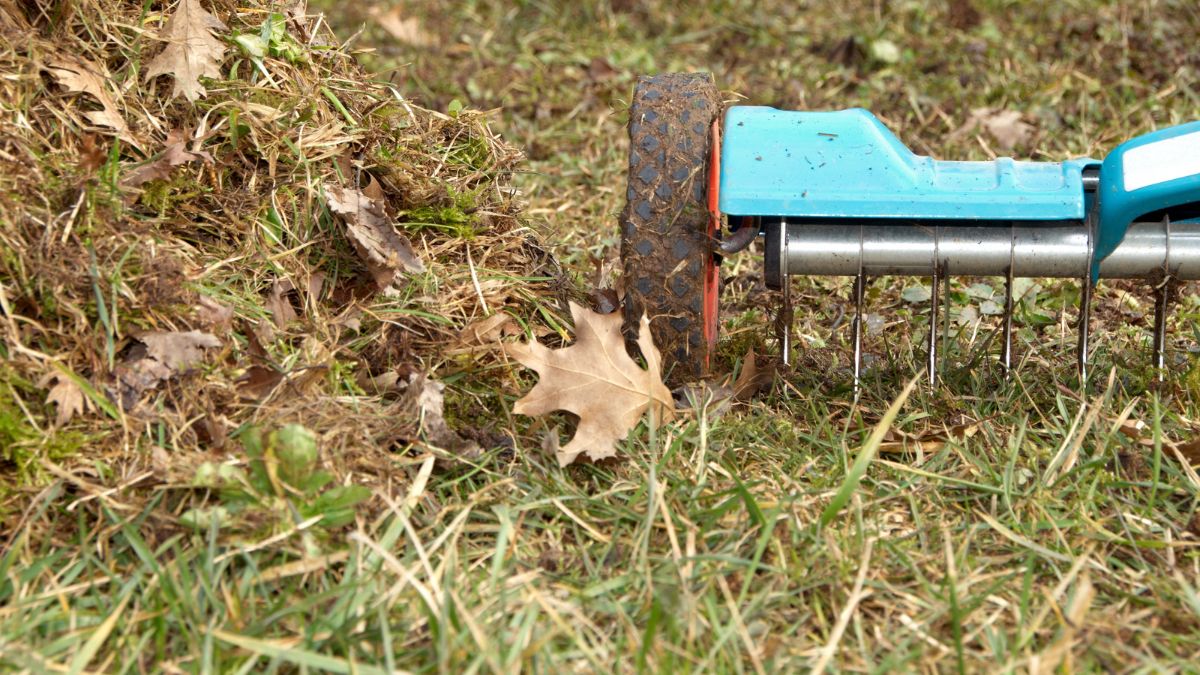
Aerating your lawn is critical in preparing it for spring growth. Aeration is the removal of tiny plugs of dirt from the lawn, which improves soil drainage and allows water, air, and nutrients to reach the grassroots. This may be accomplished with either a manual or motorized aerator.
Aerating your lawn creates microscopic pores in the soil that allow water, oxygen, and nutrients to reach the plant roots. This is especially crucial if you have thick clay soil, which can clump and harden, making water, air, and nutrients challenging to penetrate. Aerating breaks up the compacted soil, allowing the roots to grow deeper and stronger.
Another benefit of aerating your lawn is that it can assist in minimizing the quantity of thatch on the grass. Thatch is a covering of dead grass and other organic debris that can accumulate on the soil’s surface and hinder water, air, and nutrients from reaching the roots. The thatch is eliminated by removing tiny plugs of dirt, allowing the grass to develop deeper and stronger roots.
One method for aerating your lawn is using a manual aerator, a device with spikes or hollow tines pressed into the soil to produce holes. This strategy is ideal for tiny lawns or for treating specific parts of the lawn that require special care.
A motorized aerator, which is a machine with hollow tines that are driven into the soil to create holes, is another alternative. This process is more effective and quicker than hand aeration, making it ideal for vast lawns.
When aerating your lawn, be sure you mow it first and water it the day before, so the soil is wet enough for the aerator to produce the holes. After aerating, fertilize the grass to give it a boost and help fill in the gaps left by the aeration process.
Aerating your grass is a critical step in preparing it for spring growth. You will improve soil drainage, enable water, air, and nutrients to reach the roots, and reduce the amount of thatch that has developed on the grass by making small holes in the soil. Whether you pick manual or motorized aeration, you will be providing your lawn with the necessary boost in spring.
Rake any thatch that has accumulated on the lawn to encourage growth
Raking thatch from your lawn is a vital step in preparing it for new growth in the spring. Thatch is a coating of dead grass and other organic matter that can accumulate on top of the soil, blocking water, air, and nutrients from reaching the grassroots. By eliminating thatch, you are letting water, air, and nutrients reach the roots, promoting development and improving the health of your grass.
There are several methods for removing thatch from your grass. Using a thatching rake is one of the most effective approaches. A thatching rake is a tool that has a series of sharp tines for removing thatch from the grass. Simply rake the lawn back and forth, being careful not to injure the grassroots.
A lawn aerator is another excellent way. Aerators are tools that make microscopic holes in the grass so that water, air, and nutrients can reach the roots. By using an aerator, you will not only remove thatch but also create holes in the soil that will enhance drainage and allow water, air, and nutrients to reach the roots.
For optimal results in terms of spring green lawn care, utilize a combination of a thatching rake and an aerator. Aerating your grass first can help to break up compacted soil and remove away soil plugs, including thatch. Remove any residual thatch using a thatching rake.
It is critical to understand that thatch should not be removed entirely at once, especially if the grass has a lot of thatch. Removing too much thatch at once might harm your grass, so remove it in moderate increments over time.
Finally, scraping thatch off your grass is a critical step in preparing it for spring development. By eliminating thatch, you are letting water, air, and nutrients reach the roots, promoting growth and improving the health of your grass. Whether you use a thatching rake, an aerator, or a mix of the two, it is essential to do so in modest amounts and with caution so as not to damage the roots.
Apply a pre-emergent herbicide to prevent weed seeds from germinating
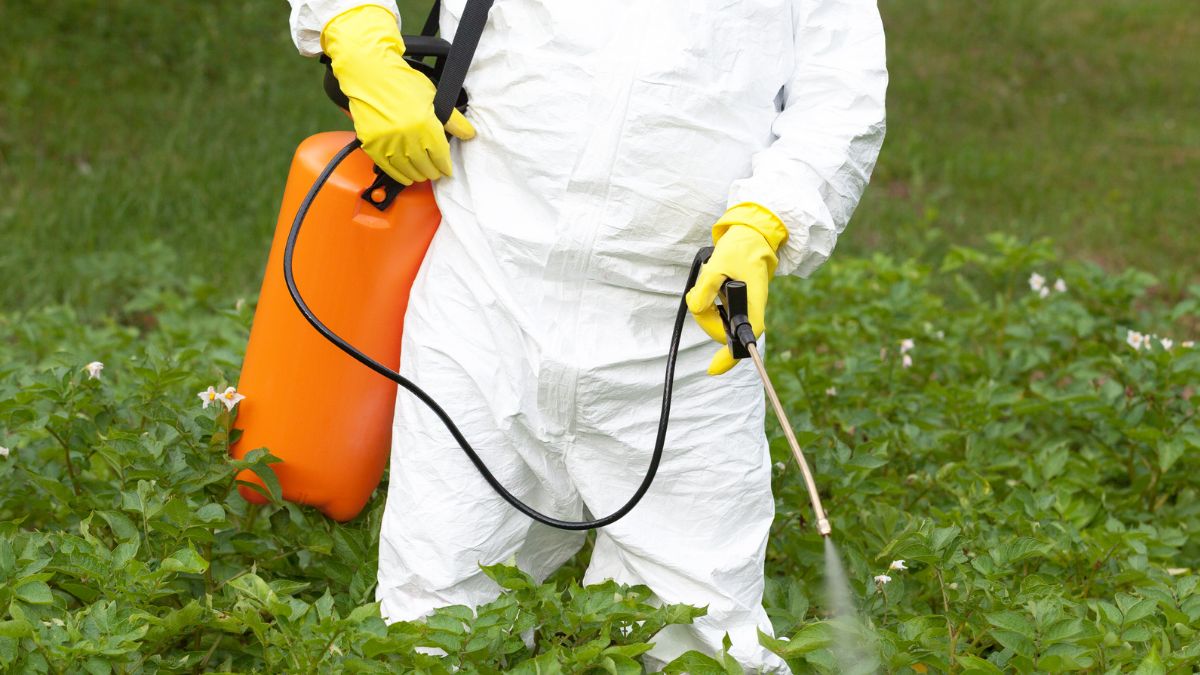
Pre-emergent herbicide application is a crucial step in keeping a healthy lawn and garden. A pre-emergent herbicide is a weed killer that is administered to the soil before the weeds sprout. Using a pre-emergent herbicide, you may prevent weed seeds from germinating and taking root in your lawn or garden.
It is critical to pick a pre-emergent herbicide suited for the plants you are cultivating. Some pre-emergent herbicides are developed primarily for use on lawns, while others are intended for use in gardens. Make sure you carefully read the label and follow the directions.
The application’s timing is also critical. The majority of pre-emergent herbicides are administered in early spring when weed seeds are just starting to grow. It is critical to apply the herbicide before the weed seeds develop; else, it will be useless. For further information on the particular timing of application, consult the product label.
One thing to bear in mind is that pre-emergent herbicides will prevent any seeds from sprouting, including attractive ones. If you plan to sow seeds for flowers or vegetables, wait until the pre-emergent herbicide has been applied or use a post-emergent herbicide.
To apply a pre-emergent herbicide, you’ll need the right tools, such as a broadcast spreader or a drop spreader. This equipment, which may be leased or purchased at a garden supply store, makes it simple to apply the herbicide uniformly and precisely. Wear adequate safety gear, including gloves and a mask, before spraying a pre-emergent herbicide to avoid breathing the chemicals.
In addition to using pre-emergent herbicides, it is critical to take other steps to keep weeds at bay in your lawn or garden. This includes mowing your lawn on a regular basis, hand weeding, and using proper watering and fertilization techniques. Using a multi-pronged weed control strategy, you can keep your lawn and garden healthy and weed-free all season long.
Fertilize your lawn with a balanced fertilizer to promote healthy growth
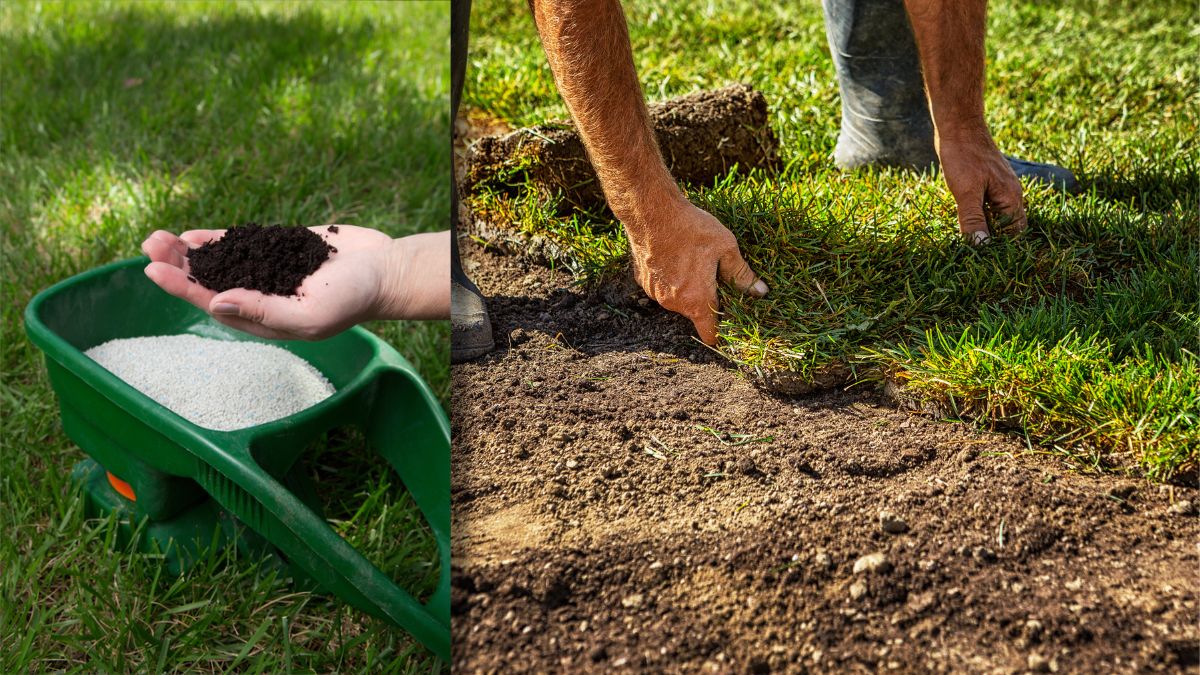
If you want a healthy, green lawn that stays that way, fertilizing it with a balanced fertilizer is crucial. A balanced fertilizer provides your lawn with a steady supply of all three of these nutrients—nitrogen, phosphorus, and potassium—to ensure its health and vitality.
It’s crucial to choose a fertilizer that works well with your grass kind while tending your lawn. Grass varieties have varying nutrient requirements, so it’s important to choose a fertilizer that will meet their demands. In addition, you should use a fertilizer that is suitable for the season. One alternative for spring is to use a slow-release fertilizer, which will gradually feed the grass plants over time.
Remember to read and follow all fertilizer package directions before using. Applying too much fertilizer to your lawn might have the same negative effects as applying too little. In order to guarantee that the fertilizer reaches the grassroots, watering the lawn immediately thereafter is highly recommended.
The usage of a fertilizer spreader is recommended for uniform fertilizer application. To avoid over- or under-fertilizing certain regions, use a fertilizer spreader to distribute the fertilizer uniformly and in a regulated manner. In order to make the job even easier and more effective, you may utilize a lawnmower that comes equipped with a fertilizer spreader.
You may achieve the thick, dark green grass you want by fertilizing your lawn on a regular basis. Fertilizing your grass twice yearly, in the spring and fall, is recommended. This will supply your grass with the nutrients it needs to flourish throughout the growing season long.
Fertilizing is just one part of keeping a healthy lawn; regular mowing and enough watering are also crucial. To maintain lush grass, you should water, mow, and fertilize it regularly. You can keep your lawn looking great all season long by giving it the attention and nourishment it needs.
Last but not least, if you want a healthy, green lawn that stays that way, you need to treat it regularly using a balanced fertilizer. You can make sure your lawn gets the nutrients it needs by choosing the right fertilizer, applying it properly, and sticking to a regular fertilization plan. Fertilizing your lawn is one of the best ways to ensure its health and beauty throughout the season, along with other maintenance practices like mowing, watering, and aerating.
Water your lawn deeply and infrequently to encourage deep roots
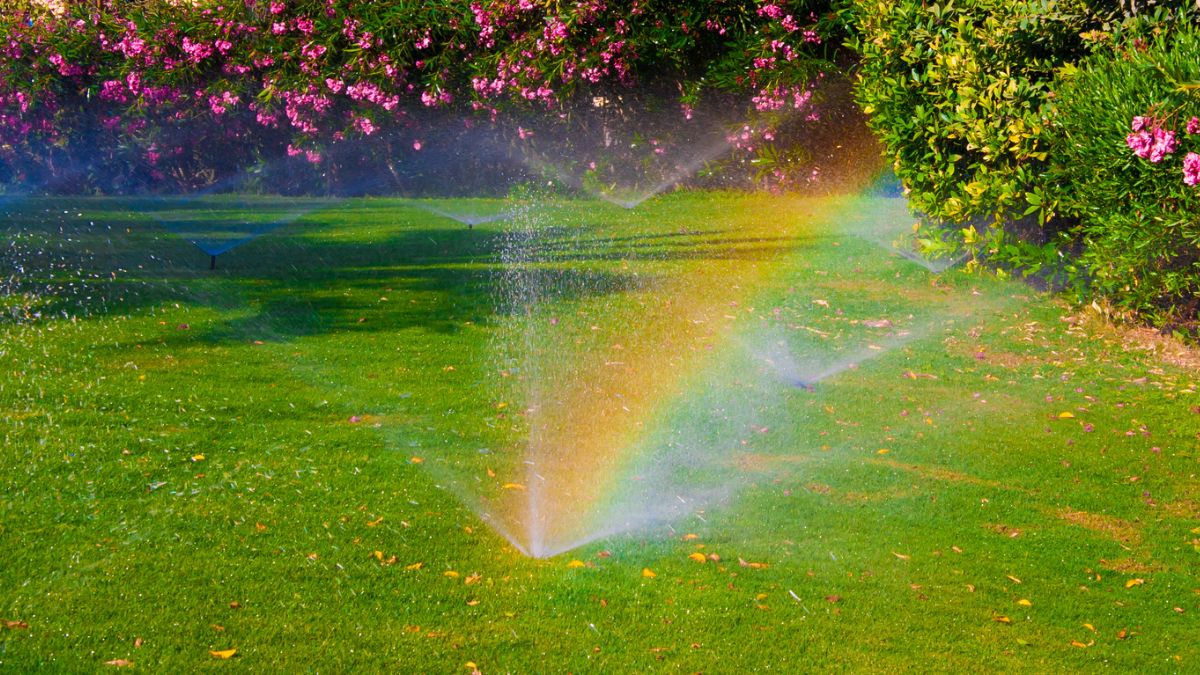
In order to promote deep roots and keep your grass healthy, you should water it thoroughly and rarely. Provide sufficient water to saturate the soil to a depth of at least 6 inches while watering your grass. If you do this, the grassroots will be encouraged to grow deeper into the earth, making the lawn more resistant to heat and drought.
Too much or too little watering of the grass is a typical error. This can cause the grass to have weak roots and eventually die. Shallow roots can’t get to the water and nutrients farther down, so they dry up and wilt more quickly when the temperature rises.
Using a sprinkler system that administers water slowly over a longer period of time is one approach to watering your grass deeply and rarely. Allowing the water to percolate down to the grass’s roots is the best way to irrigate your lawn. Alternatively, you may use a garden hose fitted with a nozzle that allows for a more measured stream of water.
The time of day that you water your grass is crucial. Early in the morning, when the temperature is lower, and there is less wind, is the best time to water your grass. If you water your plants in the evening, the leaves will remain damp all night, increasing the likelihood of illness.
Mow your lawn at the correct height for the type of grass you have

The key to a lush, green lawn is cutting it at the right height each time. Your lawn’s recommended mowing height will vary based on the type of grass you have. Mowing at the right height can encourage healthy growth and a lush, green lawn, but this varies depending on the type of grass you have.
The ideal mowing height for cool-season grasses, including Kentucky bluegrass, fescue, and ryegrass, is between two and three inches. This will encourage the grass to spread its roots deeply, smothering any nearby weeds while maintaining a well-kept appearance. However, warm-season grasses like Bermuda and zoysia need to be kept at a shorter length of 1 to 2 inches between mowings. By doing so, the grass will be encouraged to grow and spread to fill up the empty spaces, all while maintaining its orderly appearance.
Lawns benefit greatly from being mowed at the optimal height. Your lawn will be more vulnerable to disease, drought, and insect damage if you mow it too short. However, if you let your grass grow unchecked, it will be weaker and more prone to thatch.
Another crucial part of lawn maintenance is having razor-sharp mower blades. Damage to the grass from dull blades is often the result of tearing, which can invite pests like illnesses and insects. A clean cut using a sharp knife means greater development and a more attractive look.
In conclusion, a healthy and aesthetically pleasing lawn begins with regular mowing at the optimal height for the grass species present. Maintaining a neat and tidy look while encouraging healthy growth is possible with proper mowing height. In conjunction with razor-sharp blades, this will promote a lawn that is more able to withstand the effects of things like disease, drought, and insects.
Overseed bare or thin spots to thicken up your lawn
Overseeding barren or thin areas can greatly enhance the health and look of your lawn. To repair a patchy lawn, known as “overseeding,” you simply scatter new grass seed over the existing lawn. Your grass will be more resilient to pests, disease, and drought if you increase its density in this way.
Overseeding your lawn requires a grass seed suitable for your region’s climate and soil. Grass seed selection is important because different types of grass have different nutrient needs and maintenance schedules.
Before you start overseeding, you should also get the soil ready. Raking up the soil and getting rid of the dead grass and leaves is part of this process. To put it another way, this will facilitate the new seed’s contact with the soil and subsequent germination.
When the ground is ready, grass seed can be broadcast over the bald or thin areas. To help the seed settle into the soil and grow, rake it over after you’ve spread it. The seed will be buried just enough to keep out the birds and other critters.
After overseeding, watering the area is crucial. Maintain moist soil until the grass seed germinates. After overseeding, fertilizing the lawn is recommended to provide the new grass with the nutrients it needs to thrive.
Remember that overseeding needs to be done at the right time of year for the type of grass you have. For information on when to apply a given product, check the packaging. Mowing the lawn at the right height for the grass type will also aid in the establishment of the new seed.
In conclusion, overseeding is an efficient method to repair your lawn’s health and aesthetics by filling in bald or thin areas. Choose high-quality grass seed, work it into the soil, and give your lawn plenty of TLC, and it will thrive. Overseeding is a method for restoring grass in sparse areas of your lawn. This will also result in a lawn that is more resistant to the effects of a disease, drought, and insect pests.
Overseeding can also help your lawn look better by creating a more uniform and polished appearance. It’s important to think about when to apply it and how high to mow it for the best results. You can have a lush, green lawn that is the envy of the neighborhood with just a little bit of work.
Repair any damage from the winter, such as frost heaving or snow mold.
Fixing any winter damage is crucial to getting your lawn ready for new growth in the spring. You should take precautions to protect your lawn from winter hazards like frost heaving and snow mold.
If the soil in your lawn freezes and expands, it can cause frost heaving, which causes the grass to rise in unsightly mounds. You can gently flatten mounds caused by frost heaving and the lawn smoothed out using a rake.
A fungal disease known as snow mold can develop if snow is left on the grass for too long. The affected areas of grass take the shape of circular patches of brown or dead grass. You can remedy the damage caused by snow mold by raking up the dead grass and replacing it with new grass seed.
In addition to fertilizing and watering, aerating your lawn is a crucial step in repairing damage from the winter. Through aeration, soil drainage is enhanced, and water, air, and nutrients are brought closer to the grass’s root system. In the long run, this can be beneficial to the lawn’s health and growth.
Remember that giving your lawn the nutrients it needs to grow stronger and healthier will also help repair damage it may have sustained over the winter.
In conclusion, fixing any winter damage is crucial in getting your lawn ready for new growth in the spring. Aerating your lawn and treating it for frost heaving and snow mold will help your lawn recover from the winter and be in tip-top shape for the warm months ahead.
Remove any moss or algae that has accumulated on the lawn
An essential part of keeping a healthy lawn is getting rid of any moss or algae that has grown on the grass. If left untreated, moss and algae may quickly take over a lawn because they thrive in wet, shaded regions. The grass might also become slick and ugly due to moss and algae.
You may scrape away moss and algae with a rake to get rid of them. To be able to stop the moss or algae from coming back, it’s crucial to remove as much of it as you can. A moss and algae killer is another option; you may find one at your neighborhood garden shop. Make sure you properly follow the directions and use the recommended dosage.
Taking good care of your grass is a further approach to stopping moss and algae from forming. This entails giving the lawn the necessary sunshine, frequent mowing, fertilization, and watering. Healthy growth will be encouraged, and you will thwart the establishment of moss and algae with proper maintenance.
In conclusion, keeping a healthy lawn requires the regular removal of any moss or algae that has gathered on the surface. You can make sure that your grass stays lush and green throughout the season by getting rid of moss and algae and giving it the necessary care.
Consider top dressing with a fine layer of compost or other organic matter to add nutrients to your soil
The process of topdressing your lawn with a thin layer of compost or any other type of organic matter to supply nutrients to your soil is an essential stage in the process of keeping a healthy lawn. The practice of spreading a thin layer of organic material over the surface of the soil is referred to as topdressing. It is possible that doing so will assist in enhancing the general health as well as the fertility of your soil.
Since of its high nutrient and microbial content, compost is an ideal choice for topdressing because it may assist in enhancing the structure of the soil as well as the fertility of the soil. Other types of organic materials, such as manure that has decomposed enough or leaf mold, may also be utilized.
It is essential to employ a thin coating of organic material while topdressing, with a thickness of around one-fourth to one-half of an inch. By doing this, we can be certain that the organic matter will have an easier time penetrating the soil. Ensure that the organic matter is distributed uniformly throughout the turf, and then rake it so that it becomes incorporated into the soil.
When the grass is actively growing, either spring or fall is the ideal time to apply topdressing. It is essential to thoroughly water the lawn after applying topdressing to facilitate the incorporation of organic matter into the soil and stimulate the growth of the new grass.
In conclusion, topdressing your lawn with a thin layer of compost or another type of organic matter may enhance its general health and fertility by adding important nutrients to the soil as well as improving the grass’s overall appearance. This will not only promote healthy growth, but it will also make your grass more resistant to the damaging effects of a disease, drought, and insects. A lawn that is both healthy and beautiful may be easily and successfully maintained with this method.
Use a rake to remove any fallen tree fruit or nuts that may have accumulated
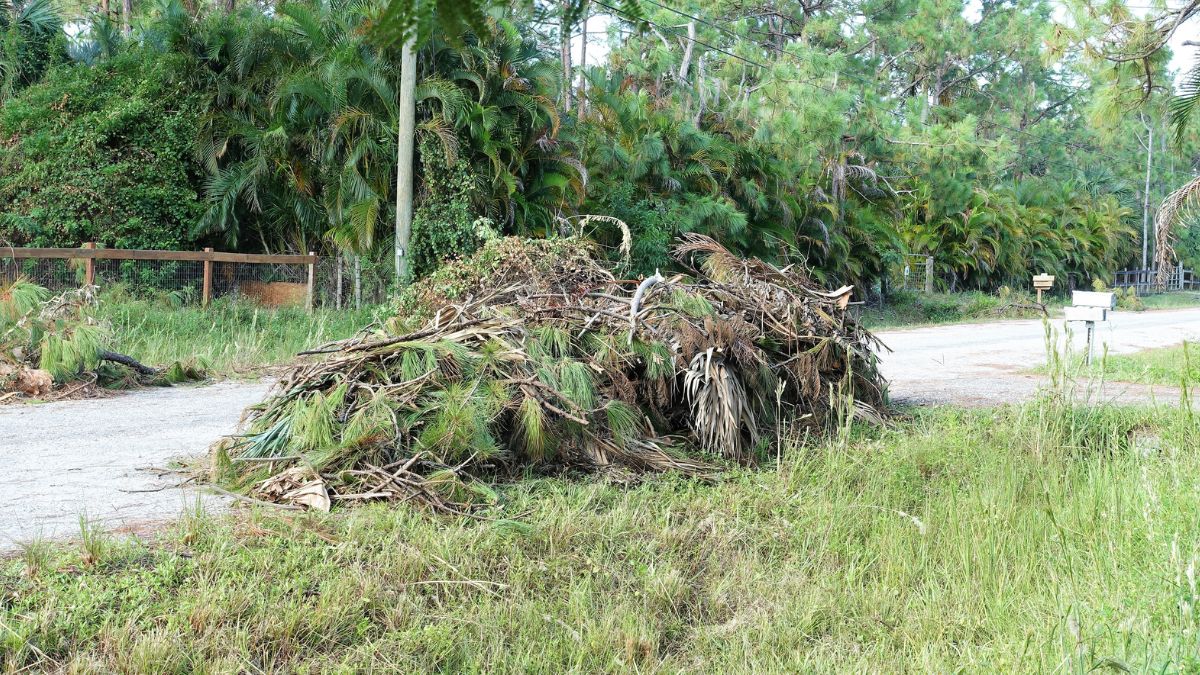
Maintaining a healthy lawn requires the routine use of a rake to clear away any collected fruit or nut drops from trees. Fallen fruit and nuts may harm your grass in addition to making it seem untidy and attracting bugs and wildlife.
It’s crucial to remove as much fruit and nut debris as you can while raking it up to stop it from spoiling and luring pests. You may also gather the dropped fruit and nuts and compost them.
The easiest method to deal with this issue is to prevent the buildup of dropped fruit and nuts, so keep that in mind as well. Regular tree trimming will help achieve this by lowering the amount of fruit and nut production.
In conclusion, using a rake to remove any stored fruit or nuts from trees is crucial for keeping a lush lawn. By doing this, you can maintain your lawn looking orderly and clean and deter pests and wildlife from visiting your house. A better option can perhaps be to prevent the collection by routinely trimming the trees.
Trim any overhanging tree branches that cast shade on your lawn
Overhanging tree branches that cast a shadow on your lawn should be trimmed regularly, as grass and any other plants may have trouble flourishing in the shade. Getting increased sunshine on your lawn and encouraging healthy development is as simple as pruning back some overhanging bushes.
Moreover, overhanging branches can also cause structural damage to a tree itself if not pruned properly. As part of this process, you should learn how to angle properly and clip branches. In addition, you should always be aware that too much pruning may be bad for your trees, so only cut off the limbs that are casting too much shade on the grass.
Cutting low-hanging branches may improve the tree’s aesthetics as well as keep it safer during storms by lowering the number of branches that could break off during a storm.
A healthy lawn requires adequate exposure to sunshine, which may be improved by eliminating the shadow. It’s crucial to remember that following the correct pruning practices, including avoiding over-pruning, might lead to extra additional advantages.
Make sure you are using appropriate mowing and watering techniques for your climate and grass type
You should apply proper mowing and irrigation methods for your local environment and grass variety to have a lush, green lawn. How often and how much water you should give your lawn depends on a number of factors, including the species of grass you have, the local climate, and your own personal preferences in lawn care.
Mowing at the height of 2 to 3 inches and watering frequently, but not too much, are recommended for cool-season grasses such as Kentucky bluegrass, fescue, and ryegrass. However, warm-season grasses like Bermuda and zoysia require shorter cutting heights of 1 to 2 inches and less frequent but deeper watering.
Depending on the local climate, the frequency and duration of watering should be regulated. If you live in a dry area, you may need to water your grass more often than if you are in a more humid region.
To maintain a healthy lawn, you must do more than just mow and water; you must also fertilize it in a way that works with your region’s climate and grass variety. This will aid in supplying your grass with the balanced nutrition it needs to flourish.
Keep an eye out for any signs of pests or diseases and take action as necessary
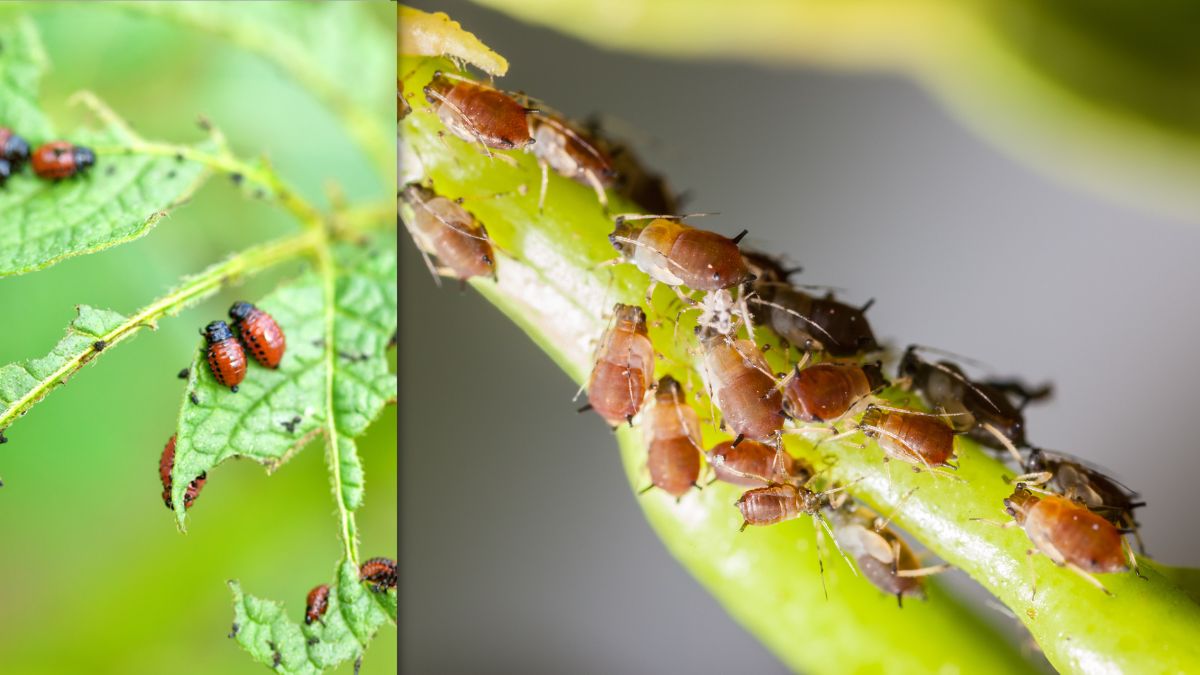
Maintaining a healthy lawn requires keeping an eye out for indicators of pests or illnesses and acting as needed. Pests and diseases may harm your grass and, if unchecked, inflict substantial and costly damage.
Brown or yellow patches on the lawn, wilted or discolored grass, or the presence of insects or holes in the lawn are all signs of pests. Similar symptoms, such as discoloration or wilting, can be caused by diseases, as can the presence of fungus or mold.
If you notice any signs of pests or diseases, it’s critical to act quickly to prevent further damage. This could include applying pesticides or fungicides or removing and reseeding affected areas of the lawn.
It is also critical to be proactive in preventing pests and diseases by using good spring lawn care techniques such as proper mowing, watering, and fertilization, as well as keeping the lawn free of debris and maintaining an appropriate pH level for the grass type.
Finally, keeping an eye out for signs of pests or diseases and acting as needed is critical for maintaining a healthy lawn. You can prevent damage and keep your lawn looking beautiful and healthy for years to come by being vigilant and taking quick action.
Consider getting a professional lawn care service to help you with preparing your lawn for spring growth
Consider hiring a professional lawn care provider to assist you in preparing your grass for spring growth. A professional lawn care provider may offer a variety of services to assist in guaranteeing that your lawn is in the best possible shape for spring growth. Soil testing, fertilization, aeration, and pest and disease management are examples of these services.
A professional lawn care provider may also advise you on the best mowing and watering practices for your climate and grass type, as well as assist you in selecting the appropriate grass seed and fertilizers for your lawn. They also have the necessary tools and equipment to complete the jobs in a more efficient and effective manner.
A professional lawn care service may also assist you in identifying and addressing any concerns affecting the health of your lawn, such as poor soil drainage or compacted soil. This can assist in guaranteeing that your grass is ready for spring growth and is less vulnerable to disease, drought, and insect damage.
Finally, hiring a professional lawn care provider to assist you with preparing your grass for spring growth is a wise decision. They have the expertise, experience, and equipment to perform a variety of treatments to assist in guaranteeing that your lawn is in the best possible shape for spring growth. This will assist you in achieving the gorgeous, healthy lawn you seek while also saving you time and work.
Conclusion
In conclusion, preparing your lawn for the growth that will occur in the spring is an essential phase in the process of keeping a healthy and attractive lawn. You may put your lawn in the best possible condition for the growth that comes with spring by cleaning debris, aerating the soil, feeding it, and overseeding it, among other things.
When deciding how to mow and water your lawn, it is essential to take into account the local environment and the type of grass you are growing. Additionally, it is critical to be watchful and take appropriate measures to combat any pests or illnesses that may appear on your lawn. Even though a homeowner may complete many of these duties on their own, thinking about hiring a professional spring lawn care service is another wonderful alternative to take into consideration.
They have the expertise, experience, and tools to provide a wide range of services that will help to ensure that your lawn is in the best possible condition for spring growth. These services will assist in ensuring that your lawn is in the best possible condition for spring development. You may have a beautiful and healthy lawn that will be the envy of your community with just a little bit of work and maintenance on your part.
What should I do if my lawn is dead?
If your lawn is dead, there are a few things you can do to try and revive it. One option is to add compost to your lawn to help it break down and become fertile. You can also water your lawn more often in the spring, and fertilize it with a lawn fertilizer specifically created for spring growth.
What are some tips for preparing my lawn for spring growth?
Water your lawn regularly throughout the winter and into early spring to help it stay moist and healthy.
Fertilize your lawn in early spring with a good lawn fertilizer.
Mow your lawn in early spring to an appropriate height.
Rake your lawn in early spring to remove any debris or leaves.
How long will it take for my lawn to recover from preparation for spring growth?
It typically takes 2-3 weeks for your lawn to recover from the prep work for spring growth.
How do I service my lawn mower?
Mowing your lawn is an important part of keeping it looking its best, but it’s important to remember to service your lawn mower too. A regular mowing and maintenance schedule will help your lawn grow evenly and prevent any problems.
1. Fill your toolbox with the right equipment.
2. Check your lawn mower’s battery and oil levels.
3. Clean and lubricate your mower blades.
4. Check your mower’s air filter.
5. Check your mower’s spark plug.
6. Check your mower’s chain and sprocket.
7. Check your mower’s drive belt.
8. Check your mower’s height adjustment system.
9. Check your mower’s blade guards.
10. Check your mower’s mulching system.
11. Check your mower’s height adjustment system.
12. Check your mower’s cutting deck.
13. Check your mower’s speed control.
14. Check your mower’s blades.
15. Check your mower’s discharge chute.
16. Check your mower’s handle.
17. Check your mower’s safety devices.
How often should I mow my lawn in Spring?
You don’t need to mow your grass every day to keep it healthy. In fact, you can have a healthy lawn even with a less frequent mowing.
It is best to mow your lawn while the grass is at its tallest point. Usually, this happens in the first to middle of April. You might be able to mow your grass as late as mid-May, depending on the weather.
Make careful to adjust your mowing schedule to the expected weather.
If you reside in a really dry area, you might not need to water your lawn as regularly. In these cases, you can water your lawn once per week. Similar to this, you might only need to water your grass once every two weeks if it is significantly overgrown with weeds.
A lawn that is cut too frequently risked being harmed. Make careful to service your lawn mower every two months if you just mow your yard occasionally. Using pre-emergent herbicides is an additional method for preventing weed development.
